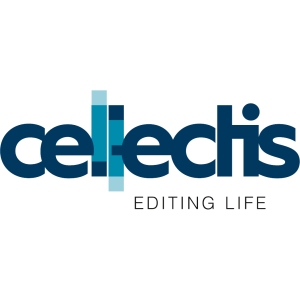Cellectis’ R&D Day Highlights Lasme-cel’s Potential to Address Significant Unmet Need for Patients with r/r B-ALL
Rhea-AI Summary
Cellectis (NASDAQ: CLLS) presented Phase 1 BALLI-01 data for lasme-cel (UCART22) on Oct 16, 2025, showing encouraging activity in heavily pretreated r/r B-ALL patients and a planned pivotal path. Key clinical highlights: Process 2 ORR 69% (P2 n=22), RP2D ORR 83% (n=12) and target Phase 2 population ORR 100% (n=9); CR/CRi 56% in the target population with ~80% MRD-negative responses; median OS 14.8 months in MRD-negative CR/CRi. Safety was described as generally tolerable (CRS 2.5%, ICANS 5%, 8 related SAEs).
Regulatory/commercial: pivotal Phase 2 initiated (first patient expected Q4 2025), BLA targeted 2028, and illustrative 2035 peak gross sales ~$700M (U.S., EU4, UK).
Positive
- Process 2 ORR 69% (n=22)
- RP2D ORR 83% (n=12)
- Target Phase 2 ORR 100% (n=9)
- CR/CRi in target pop 56% with ~80% MRD-negative
- All became transplant-eligible, 78% proceeded to HSCT
- Illustrative peak sales ~ $700M in 2035 (U.S., EU4, UK)
Negative
- Very small sample sizes in key cohorts (n=9, n=12, n=22)
- Safety events reported: CRS 2.5% and ICANS 5% with 8 related SAEs
- One dose-limiting toxicity observed at Dose Level 3
- BLA timeline not expected until 2028
News Market Reaction 26 Alerts
On the day this news was published, CLLS gained 33.53%, reflecting a significant positive market reaction. Our momentum scanner triggered 26 alerts that day, indicating elevated trading interest and price volatility. The stock closed at $5.49 on that trading session. This price movement added approximately $77M to the company's valuation, bringing the market cap to $307M at that time.
Data tracked by StockTitan Argus on the day of publication.
○ Efficacy: ORR of
○ Safety: in Phase 1 (n=40), lasme-cel was generally well-tolerated (including 1 case of grade 2 IEC-HS which resolved)
○ Durability: in patients who achieved MRD-negative CR/CRi, median OS was 14.8 months
○ In the target Phase 2 population, CR/CRi rate of
○ In the target Phase 2 population,
○ Among 11 patients previously treated with all 3 targeted therapies (inotuzumab, blinatumomab, and CD19 CAR-T), 8 responded and 7 achieved MRD-negative status
○ BALLI-01 pivotal Phase 2 in r/r B-ALL initiated
○ Potential peak gross sales of up to ~
NEW YORK, Oct. 16, 2025 (GLOBE NEWSWIRE) -- Cellectis (the “Company”) (Euronext Growth: ALCLS - NASDAQ: CLLS), a clinical-stage biotechnology company using its pioneering gene editing platform to develop life-saving cell and gene therapies, today hosted an R&D Day providing promising clinical data from the Phase 1 BALLI-01 study of lasme-cel (UCART22) for transplant ineligible patients with relapsed/refractory B-cell acute lymphoblastic leukemia (r/r B-ALL) in the third line or beyond (3L+). The Company unveiled the design of the pivotal Phase 2, its planned registration path for lasme-cel's initial indication, as well as the commercial opportunity. The event also included panel discussions with global hematology experts on the potential of lasme-cel to address the significant unmet need for heavily pretreated patients.
“We are encouraged by the Phase 1 results of the BALLI-01 study in a population that had largely exhausted treatment options and faced a poor prognosis. The depth of response we observed, enabling a high percentage of patients in the study to proceed to transplant, with the potential for durable remission, is clinically meaningful. We are focused on rapidly advancing our pivotal Phase 2 program and bringing lasme1-cel to patients with this significant unmet need,” said Adrian Kilcoyne, MD, MPH, MBA, Chief Medical Officer of Cellectis.
“Today, Cellectis’ has reached a tipping point as we move lasme-cel into a pivotal Phase 2 trial. The need in refractory or relapsed B-ALL, especially for adult patients for whom every day counts, is significant. Our strategy is to achieve minimal residual disease-negative (MRD-negative) complete remission to create a window for hematopoietic stem cell transplantation and meaningfully improve overall survival. Cellectis is pioneering allogeneic CAR-T therapies that aim to be safer, faster, and more scalable and accessible therapy. Lasme-cel is designed to be off-the-shelf, ready when the patient is ready, so it may enable rapid disease control instead of waiting, potentially bringing more patients to the point where transplant becomes possible,” said André Choulika, Ph.D., Chief Executive Officer of Cellectis. “That is why an allogeneic CD22 approach is not just another CD19 program, it is potential solution for a broader patient population facing r/r B-ALL.”
BALLI-01 Phase 1 Study Evaluating lasme-cel
The Phase 1 of BALLI-01 clinical study was designed to evaluate the safety and clinical activity of lasme-cel in patients with r/r B-ALL.
The BALLI-01 trial enrolled 40 patients aged 15–70 years expressing >
Lasme-cel was given at escalating dose levels following lymphodepletion with either fludarabine and cyclophosphamide (FC) or FC with alemtuzumab (FCA). The addition of alemtuzumab was implemented to sustain host T-cell and Natural Killer (NK)-cell depletion and to support lasme-cel expansion and persistence.
Phase 1 Safety Data:
The Phase 1 safety data confirm that lasme-cel was generally well-tolerated, with expectations for CAR-T therapies, with manageable adverse events, including cytokine release syndrome (CRS) and immune effector cell–associated neurotoxicity syndrome (ICANS).
- Dose-limiting toxicities (DLTs) were uncommon, with only 1 case reported at Dose Level 3 (DL3)
- Adverse event of special interest (AESI) of CRS occurred in
2.5% of patients and ICANS in5% of patients - 8 lasme-cel related serious adverse events (SAEs) were reported
Phase 1 Activity Data
In the Phase 1 of BALLI-01 study, 40 transplant ineligible 3L+ patients were dosed with lasme-cel: 18 patients were dosed with product manufactured by an external CDMO (Process 1, or P1) and 22 patients were dosed with Cellectis-manufactured product (Process 2, or P2). In this dataset, P2 was associated with higher response rate than P1:
Complete Remission (CR) / Complete Remission with complete hematologic Recovery (CRi) rate:
At Dose Level 3 P2 (DL3), the recommended Phase 2 dose (RP2D), 12 patients were dosed (n=12):
- The CR/CRi rate was
42% , with80% of these responders achieving MRD-negative status
For the subset of 9 patients who met the criteria of the pivotal Phase 2 population (Process 2, DL3, age ≤ 50):
- The CR/CRi rate was
56% with80% of responders MRD-negative - The ORR was
100% with MRD-negative in78%
In patients treated with P2, 13 patients had relapsed after prior CD22 targeted therapy (Inotuzumab). Of these 13 patients, 4 (
At the RP2D (DL3) subset, 7 of these 12 patients had prior inotuzumab exposure with
In the P2 cohort, 11 of 22 patients received 3 prior targeted therapies-CD19 CAR-T, blinatumumab and inotuzumab. Among these heavily pretreated patients,
The survival curve for this study suggests a clear benefit: patients who proceeded to HSCT after lasme-cel therapy showed a trend to longer overall survival than those who did not undergo transplant.
The Phase 1 data showed that lasme-cel maintained its efficacy regardless of the number or type of previous treatments, including CAR-T (
Taken together, these findings position lasme-cel as a potentially game-changing therapy for patients with r/r B-ALL.
Following successful End-of-Phase 1 meetings with the U.S Food and Drug Administration (FDA) and the European Medicines Agency (EMA), Cellectis provided a registration path for lasme-cel as a bridge to transplant in r/r ALL. The first patient in pivotal Phase 2 is expected to be enrolled in Q4 2025. Cellectis anticipates submitting a Biologics License Application (BLA) in 2028.
B-ALL Panel
Cellectis’ R&D Day also included a panel discussion on the potential of lasme-cel to address the significant unmet need for r/r B-ALL patients. Panelists included:
Pr. Nitin Jain, Professor of Medicine Department of Leukemia at MD Anderson Cancer Center
Pr. Nicolas Boissel, Head of the Adolescents and Young Adults Unit of the Hematology Department of Hôpital Saint-Louis AP-HP
Dr. Aravind Ramakrishnan, Leading Oncologist and Program medical Director for the Sarah Cannon Transplant & Cellular Therapy Program
Commercial Opportunity for Lasme-cel
As part of the R&D Day presentation, the Company discussed the potential commercial opportunity for lasme-cel in r/r B-ALL.
If approved for commercialization, Cellectis estimates that lasme-cel has the potential to reach up to approximately 1,900 addressable 3L+ B-ALL patients annually in 2035 across the U.S., EU4 (Germany, France, Spain, Italy) and UK. Of the projected incident 1L treated B-ALL population of approximately 9,200 patients, about
Lasme-cel is positioned to potentially capture a majority of such addressable market given that it provides an alternative target to CD19, one-time dosing, off-the-shelf availability and deep, MRD-responses in the 3L+ setting. Interviewed physician key opinion leaders indicated an expectation to use lasme-cel in a majority of 3L+ patients if available, and oncology analogs suggest an illustrative lasme-cel preference share of about
Finally, lasme-cel has high pricing potential across the U.S., EU4 and UK. For the EU4 and UK, Cellectis triangulated an illustrative lasme-cel 2025 anchor price of approximately
With the above assumptions, lasme-cel could achieve up to approximately
NatHaLi-01 study evaluating eti-cel (UCART20x22)
Cellectis unveiled preliminary data on eti-cel, its allogeneic CAR-T product candidate for relapsed or refractory non-Hodgkin lymphora (r/r NHL). These preliminary results demonstrate an encouraging overall response rate (ORR) of
The preliminary high rate of complete responses underscores the potential of this innovative approach to transform outcomes for r/r NHL patients. Further updates on the program are expected at the end of the year 2025.
Strategic Partnership with AstraZeneca
In its presentation during the R&D Day, AstraZeneca highlighted the significance of its strategic investment and research collaboration with Cellectis to accelerate its cell therapy and genomic medicine ambitions. The collaboration leverages Cellectis’ gene editing expertise and manufacturing capabilities to develop up to 10 novel cell and gene therapy products for areas of high unmet medical need, including oncology, immunology and rare genetic disorders.
Webcast details
A replay of today’s event and copy of the presentation will be published on Cellectis’ website.
About Cellectis
Cellectis is a clinical-stage biotechnology company using its pioneering gene-editing platform to develop life-saving cell and gene therapies. The company utilizes an allogeneic approach for CAR T immunotherapies in oncology, pioneering the concept of off-the-shelf and ready-to-use gene-edited CAR T-cells to treat cancer patients, and a platform to develop gene therapies in other therapeutic indications. With its in-house manufacturing capabilities, Cellectis is one of the few end-to-end gene editing companies that controls the cell and gene therapy value chain from start to finish.
Cellectis’ headquarters are in Paris, France, with locations in New York and Raleigh, NC. Cellectis is listed on the Nasdaq Global Market (ticker: CLLS) and on Euronext Growth (ticker: ALCLS). To find out more, visit www.cellectis.com and follow Cellectis on LinkedIn and X.
Cautionary Statement
This press release contains “forward-looking” statements within the meaning of applicable securities laws, including the Private Securities Litigation Reform Act of 1995. Forward-looking statements may be identified by words such as “designed to,” “anticipate,” “can,” “could,” “estimate,” “expectation,” “expected,” “illustrative,” “plan,” “potential,” “potentially, “positioned,” “projected,” "should," “suggest,” and “will,” "would," or the negative of these and similar expressions. These forward-looking statements, which are based on our management’s current expectations and assumptions and on information currently available to management, include statements regarding the market market opportunities with respect to lasme-cel (and the assumptions on which such determinations are based, including with respect to addressable populations and potential pricing), the potential of the Phase 2 BALLI-01 trial to be a registrational phase, the advancement, timing and progress of clinical trials (including with respect to patient enrollment and follow-up), the timing of our presentation of data and submission of regulatory filings (including without limitation, the date of BLA filing), the sufficiency of cash to fund operations, the potential benefit of our product candidates and technologies, and the financial position of Cellectis. These forward-looking statements are made in light of information currently available to us and are subject to significant risks and uncertainties, including with respect to the numerous risks associated with biopharmaceutical product candidate development. Among these are significant risks that the BALLI-01 Phase 1 data may not be validated by data from later stage of clinical trials and that our product candidate may not receive regulatory approval for commercialization. Particular caution should be exercised when interpreting results from Phase 1 studies and results relating to a small number of patients – such results should not be viewed as predictive of future results. Furthermore, many other important factors, including those described in our Annual Report on Form 20-F as amended and in our annual financial report (including the management report) for the year ended December 31, 2024 and subsequent filings Cellectis makes with the Securities Exchange Commission from time to time, which are available on the SEC’s website at www.sec.gov, as well as other known and unknown risks and uncertainties may adversely affect such forward-looking statements and cause our actual results, performance or achievements to be materially different from those expressed or implied by the forward-looking statements. Except as required by law, we assume no obligation to update these forward-looking statements publicly, or to update the reasons why actual results could differ materially from those anticipated in the forward-looking statements, even if new information becomes available in the future.
For further information on Cellectis, please contact:
Media contacts:
Pascalyne Wilson, Director, Communications, + 33 (0)7 76 99 14 33, media@cellectis.com
Patricia Sosa Navarro, Chief of Staff to the CEO, +33 (0)7 76 77 46 93
Investor Relations contact:
Arthur Stril, Chief Financial Officer & Chief Business Officer, investors@cellectis.com
__________
1 Lasme-cel is not a commercialized, FDA-approved product.
2 Pricing assumptions for illustrative purposes only – Cellectis has not started price negotiation nor made any pricing decisions for lasme-cel.
Attachment








